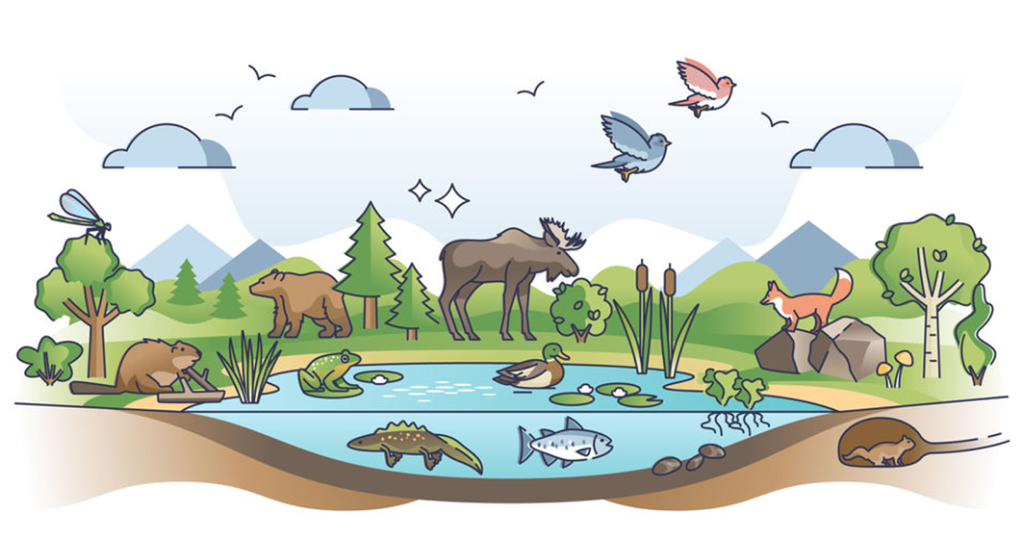Note that your final mark will not be saved in the system.
12. Competition and adaptation GapFill
You must fill all the gaps before clicking ‘Check Answers!’

Living things in their environment – adaptation and competition
All organisms have certain features or characteristics which make them successful at living in a particular habitat. These features are called , and we say that an organism is adapted to its habitat.
The study of living things, including humans, and how they relate to the environment they live in is called .
Words you need:
To understand this topic, you need to be clear about what each of the following terms means:
- A habitat is the place where an organism lives; for example, a wood or an ocean.
- A population means all the members of a single in that habitat. For example, the habitat in the picture has a population of frogs, a population of beavers, a population of grass plants, and so on.
- All the populations together make up of living things.
- The living things together with their habitat make up an ecosystem.
- Each species has its own special place in the ecosystem, called a .
Within a community there is between species, as they rely on each other for food, shelter, pollination, seed dispersal, etc. Removing one species can affect the whole community.
A stable community is one where all the species and environmental factors are in balance so that population sizes of the different species remain fairly constant.
Adaptation
Every organism needs to be able to survive in the environment it lives in. In order to do this, it needs to be able to:
- Get enough food. It may have to for food with other members of its own species, and maybe with other species also.
- Avoid being killed or eaten.
- Cope with the .
The competition between organisms means that those who are best adapted to the conditions they live in are most likely to survive and reproduce.
Organisms living in different habitats need different adaptations. For example:
- Polar bears have thick fur and a thick layer of fat, to keep the heat in.
- Camels live in hot dry deserts. They have thin fur and are adapted to lose very little in their urine and faeces.
- Desert plants such as cacti are well adapted for survival in dry conditions. They have stems which can store water and very large systems, which can collect water from a wide area.
- Animals and plants may have specific adaptations that help them to avoid being eaten. These include thorns, spines, stings and poisons.
- Camouflage colours mean that the organism is the same colour as its surroundings. have them for hunting, and prey animals have them to hide from predators.